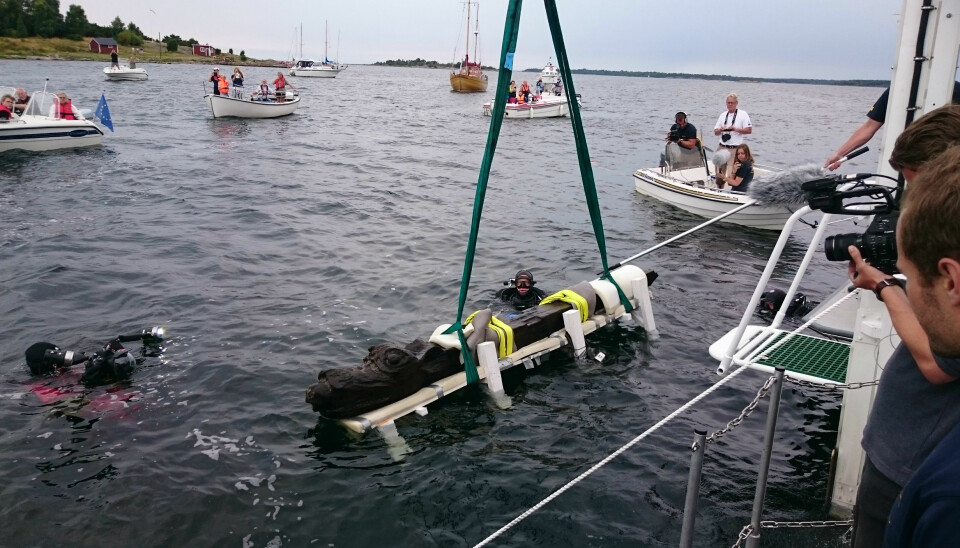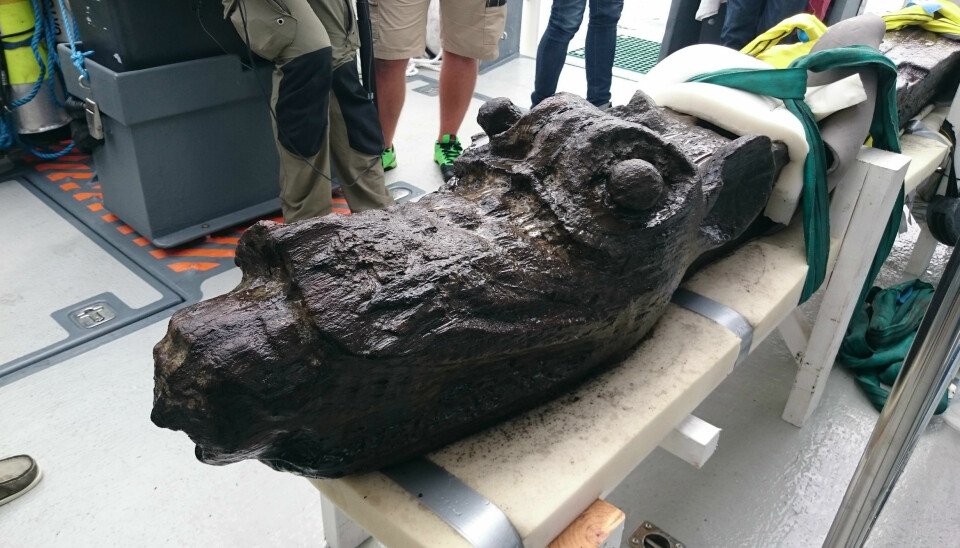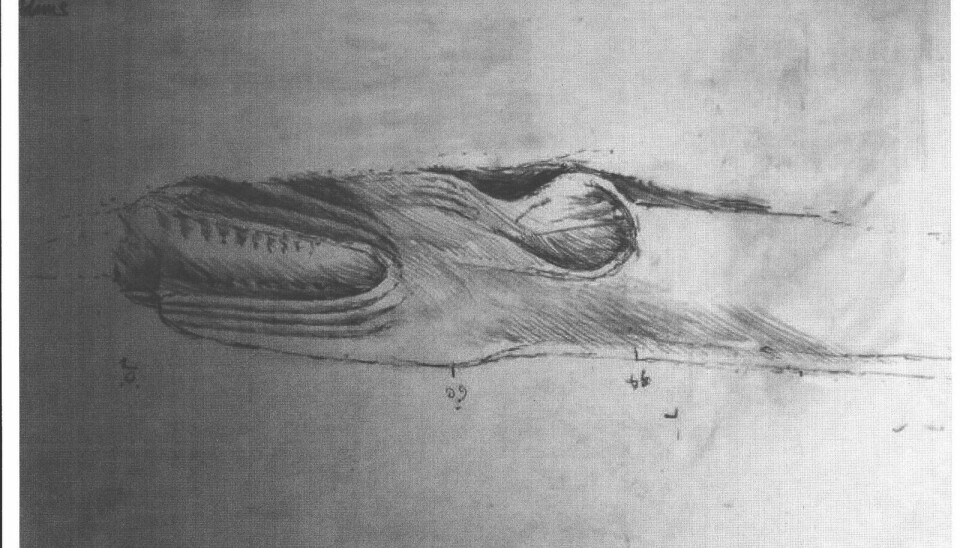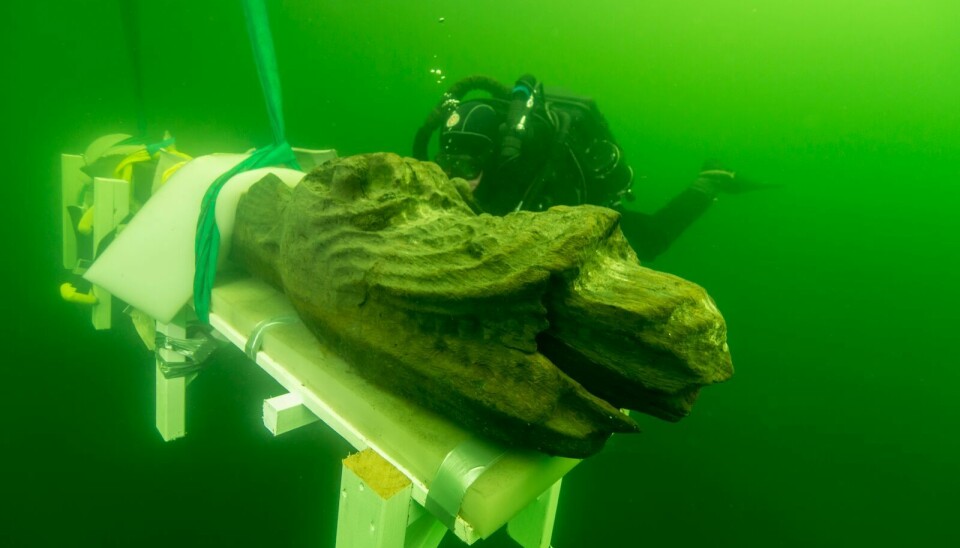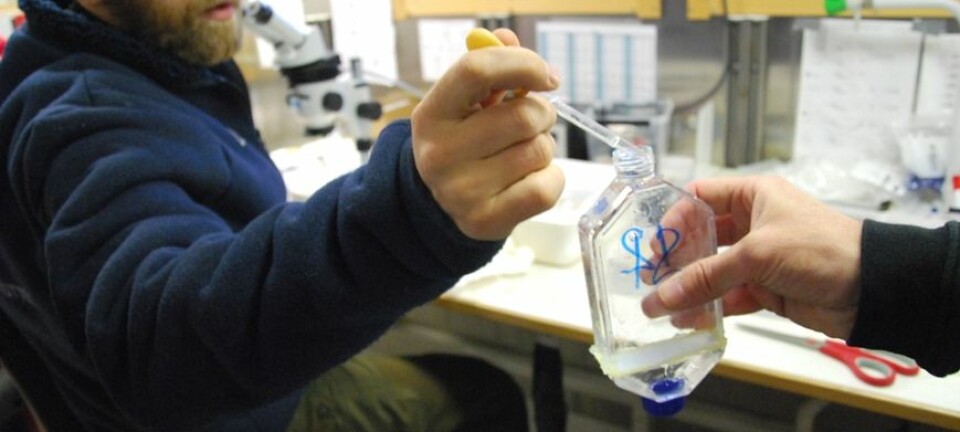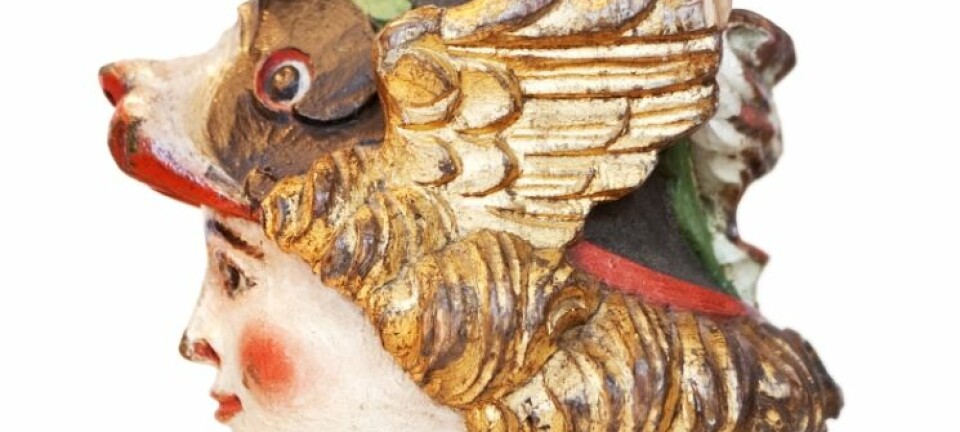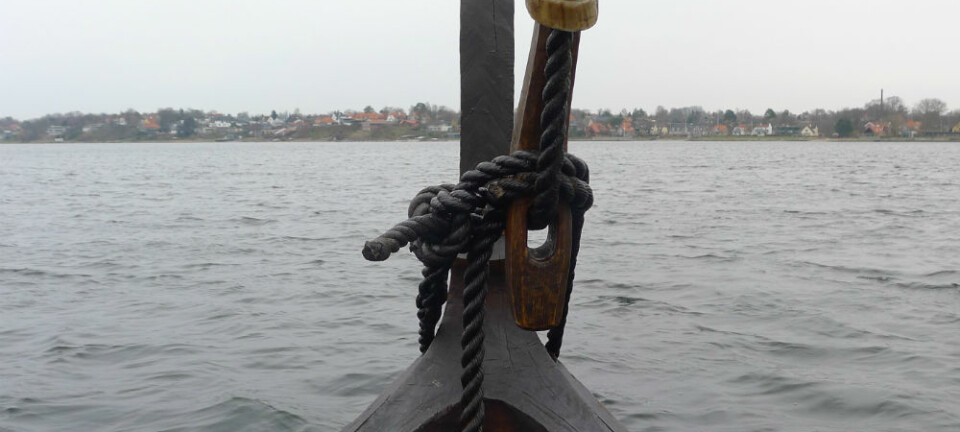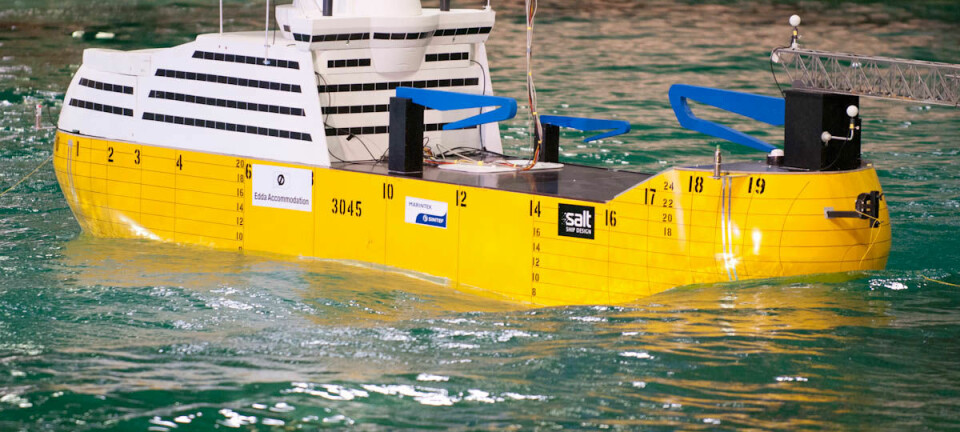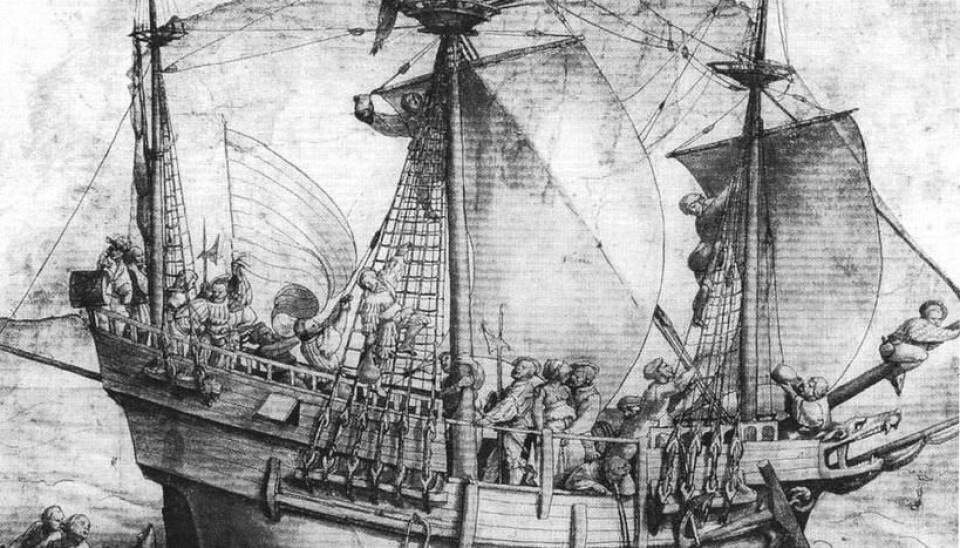
Medieval shipwreck hints at psychological warfare
Details of a sunken Danish royal ship reveals colourful details about psychological warfare in the middle ages.
With a beak of an eagle, monster teeth, and a screaming man sticking out of the mouth, the figurehead aboard the Danish medieval warship “Gribshunden” (Griffin-Hound) must have been a fearsome sight.
In its original state the monster figure would have seemed even more daunting, say the Swedish-Danish archaeologists who have made a new discovery about the figurehead.
They have found traces of paint on the old wooden monster, confirming a theory about the use of colour in contemporary warships, which has so far lacked any physical evidence.
“It’s an exciting discovery—absolutely unique. In the past we’ve had ideas that figureheads on these ships were painted, but now we have proof,” says Siiri Irskog, an archaeologist and coordinator of the Gribshunden project led by the Blekinge Museum in Sweden.
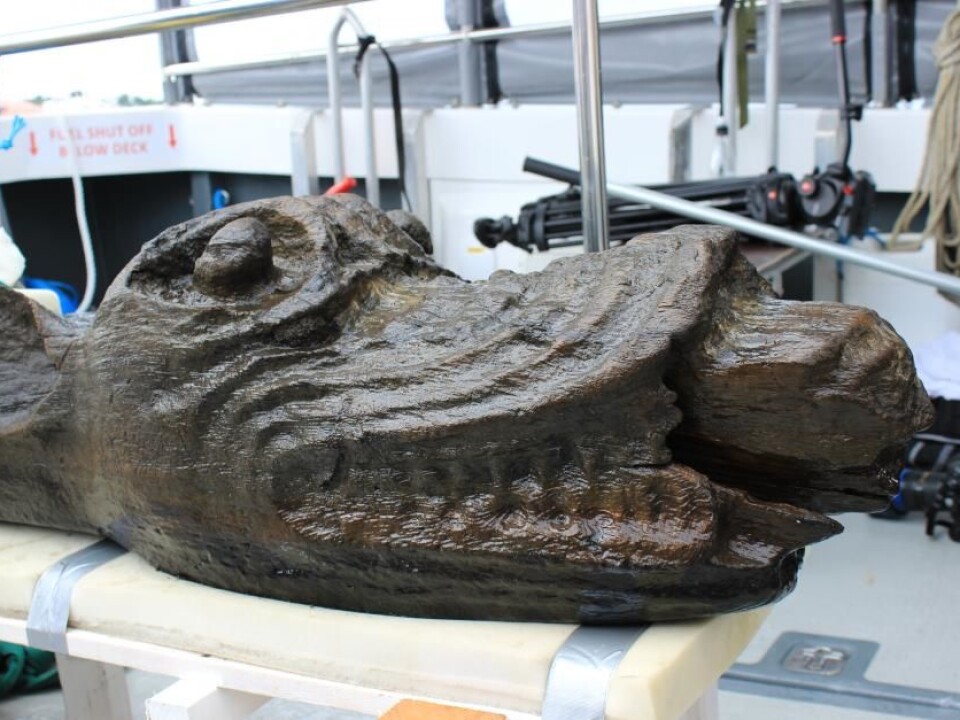
The ship sank in 1495 CE off the Swedish coast town of Ronneby, due to an explosion on board.
The wrecked ship lay at the bottom of the sea off the Swedish coast for more than five centuries before it was discovered by a group of divers. In 2016, parts of the ship, including the colourful figurehead, made it back to Copenhagen.
Here it fell under the custodianship of archaeologists at the Danish National Museum, who worked with Swedish archaeologists to study the ship.
Painted monster’s head was part of psychological warfare
Analyses showed that the surface of the figurehead contained traces of a chemical binding substance, used to blend colours so that they would keep for longer.

The discovery led the archaeologists to conclude that the wood must have been painted at one time, even though it is no longer possible to see any colour today, says Irskog.
The choice of colours would likely have had an important function beyond just looking pretty.
It was probably intended to intimidate, says archaeologist Rolf Warming, director of the Society for Combat Archaeology who studied archaeology at the University of Copenhagen, Denmark. Warming assisted with the salvaging of the figurehead.
The monstrous figurehead would have been the enemy’s first contact with the ship.
“The colours on the figurehead probably made the overall sensory input of the attack even wilder and scarier for the enemy. It can be a form of psychological warfare, along with the overwhelming sounds from instruments, fluttering flags, and coat of arms,” he says.
Archaeologists still studying the wreck
Investigations around the old ship are by no means done, says Kristiane Strætkvern, conservationist from the Danish National Museum.
Now archaeologists want to know what colour the figurehead was painted.
“We hope that by studying the sediment around the remains of the ship, we can find traces of the colour that was originally used to paint the figurehead,” says Strætkvern.
But this will not be an easy task. The remains have been exposed to hundreds of years of erosion and changeable conditions of the marine environment, where pieces of the ship are spread across the sea floor following the explosion, she says.
“Right now we have no idea of the colour and the best chance to find out will be if we’re lucky enough to see it in the sediments that the figurehead was preserved in. It would be quite spectacular, and we’ve become so adept at the methods needed, so it should be possible to do it--if the colours are there,” she says.
Strætkvern and her colleagues from the Danish National Museum are now coordinating the next stage of research with their Swedish colleagues from Blekinge Museum to take sediment samples for further analyses.
-------------------------------
Read the full story in Danish on Videnskab.dk
Translated by: Catherine Jex
